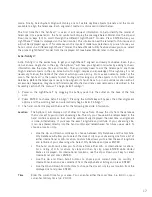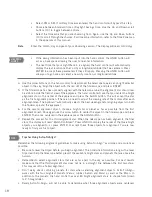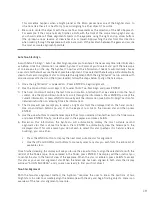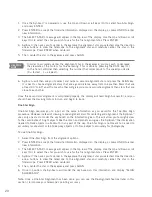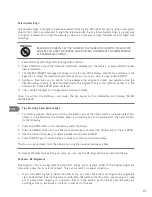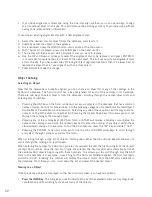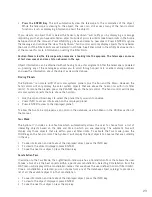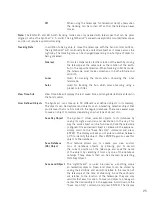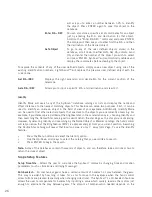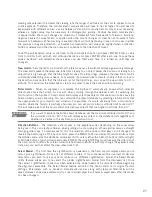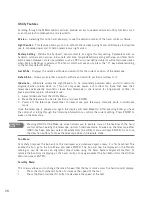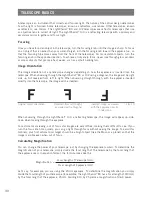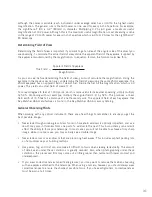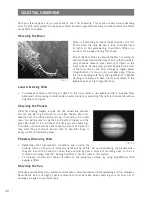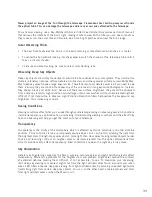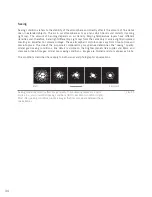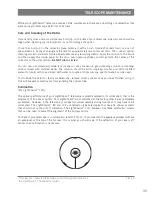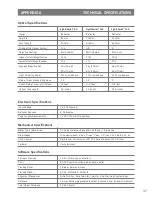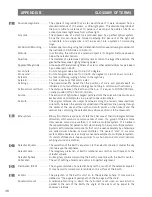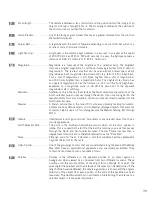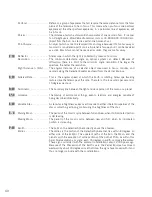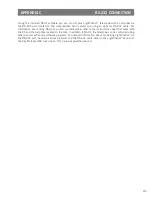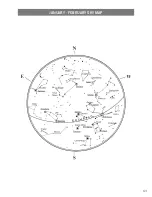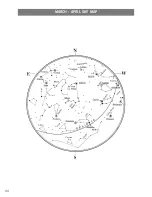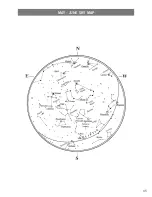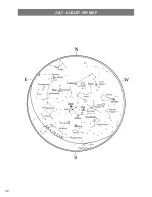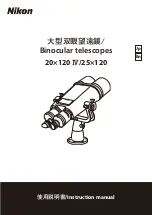
1
Although .the .power .is .variable, .each .instrument .under .average .skies .has .a .limit .to .the .highest .useful .
magnification. .The .general .rule .is .that .60 .power .can .be .used .for .every .inch .of .aperture. .For .example, .
the . LightChariot
™
. 80 . is . .2" . (80mm) . in . diameter. . Multiplying . .2 . by . 60 . gives . a . maximum . useful .
magnification .of .192 .power. .Although .this .is .the .maximum .useful .magnification, .most .observing .is .done .
in .the .range .of .20 .to .5 .power .for .every .inch .of .aperture .which .is .64 .to .112 .times .for .the .LightChariot
™
.
80 .telescope.
Determining Field of View
Determining .the .field .of .view .is .important .if .you .want .to .get .an .idea .of .the .angular .size .of .the .object .you .
are .observing. .To .calculate .the .actual .field .of .view, .divide .the .apparent .field .of .the .eyepiece .(supplied .by .
the .eyepiece .manufacturer) .by .the .magnification. .In .equation .format, .the .formula .looks .like .this:
.
.
.
. . . . . . . . . .Apparent .Field .of .Eyepiece
.
.
True .Field . .= .
.
.
.
. . . . . . . . . . . . . . . . . .Magnification
As .you .can .see, .before .determining .the .field .of .view, .you .must .calculate .the .magnification. .Using .the .
example .in .the .previous .section, .we .can .determine .the .field .of .view .using .the .same .25mm .eyepiece. .The .
25mm .eyepiece .has .an .apparent .field .of .view .of .56°. .Divide .the .56° .by .the .magnification, .which .is .40 .
power. .This .yields .an .actual .field .of .view .of .1.4°. .
To .convert .degrees .to .feet .at .1,000 .yards, .which .is .more .useful .for .terrestrial .observing, .simply .multiply .
by .52.5. .Continuing .with .our .example, .multiply .the .angular .field .1.4° .by .52.5. .This .produces .a .linear .
field .width .of .7.5 .feet .at .a .distance .of .one .thousand .yards. .The .apparent .field .of .each .eyepiece .that .
Sky-Watcher .USA .manufactures .is .found .in .the .Sky-Watcher .USA .Accessory .Catalog.
General Observing Hints
When .working .with .any .optical .instrument, .there .are .a .few .things .to .remember .to .ensure .you .get .the .
best .possible .image:
• . Never .look .through .window .glass. .Glass .found .in .household .windows .is .optically .imperfect, .and .as .a .
result, .may .vary .in .thickness .from .one .part .of .a .window .to .the .next. .This .inconsistency .can .and .will .
affect .the .ability .to .focus .your .telescope. .In .most .cases .you .will .not .be .able .to .achieve .a .truly .sharp .
image, .while .in .some .cases, .you .may .actually .see .a .double .image.
• . Never .look .across .or .over .objects .that .are .producing .heat .waves. .This .includes .asphalt .parking .lots .
on .hot .summer .days .or .building .rooftops.
• . Hazy .skies, .fog, .and .mist .can .also .make .it .difficult .to .focus .when .viewing .terrestrially. .The .amount .
of . detail . seen . under . these . conditions . is . greatly . reduced. . Also, . when . photographing . under . these .
conditions, .the .processed .film .may .come .out .a .little .grainier .than .normal .with .lower .contrast .and .
underexposed.
• . If .you .wear .corrective .lenses .(specifically .glasses), .you .may .want .to .remove .them .when .observing .
with .an .eyepiece .attached .to .the .telescope. .When .using .a .camera, .however, .you .should .always .wear .
corrective .lenses .to .ensure .the .sharpest .possible .focus. .If .you .have .astigmatism, .corrective .lenses .
must .be .worn .at .all .times.
Summary of Contents for LightChariot 102AR-AZ
Page 1: ...LightChariot INSTRUCTION MANUAL 8 0AR A Z 10 2 AR A Z 13 0 N A Z...
Page 2: ...w w w s k y w a t c h e r u s a c o m...
Page 42: ...42 APPENDIX D STANDARD TIME ZONES OF THE WORLD 26 APPENDIX A STANDARD TIME ZONES OF THE WORLD...
Page 43: ...43 JANUARY FEBRUARY SKY MAP...
Page 44: ...44 MARCH APRIL SKY MAP...
Page 45: ...45 MAY JUNE SKY MAP...
Page 46: ...46 JULY AUGUST SKY MAP...
Page 47: ...47 SEPTEMBER OCTOBER SKY MAP...
Page 48: ...48 NOVEMBER DECEMBER SKY MAP...
Page 49: ...49 NOTES...
Page 50: ...50 NOTES...

